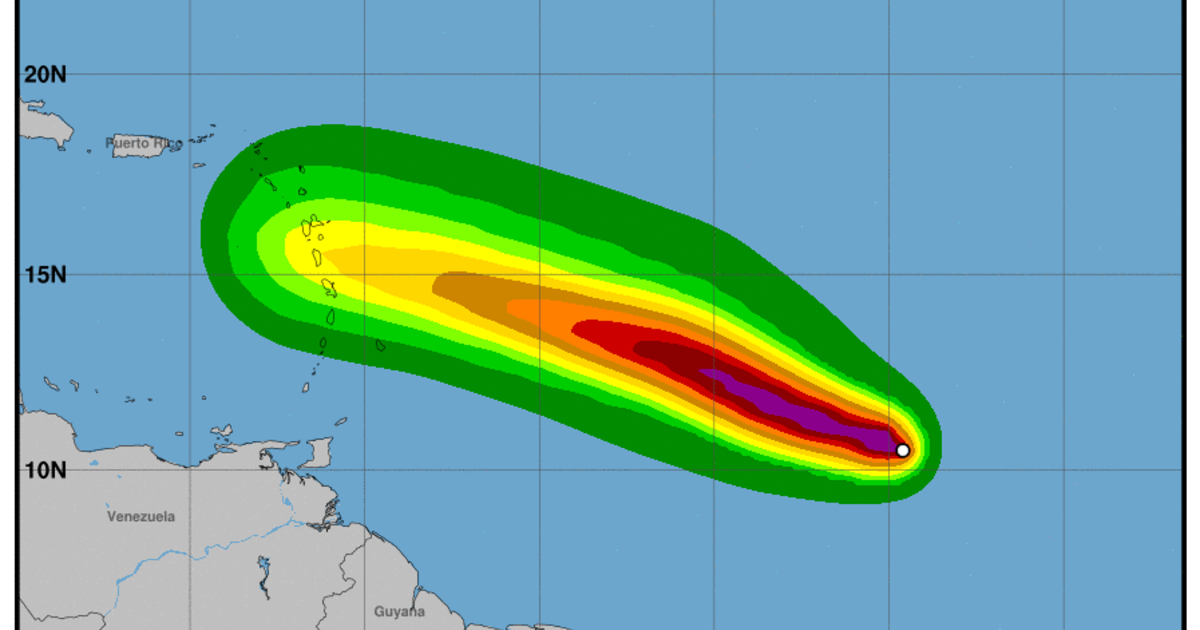Beryl’s Projected Path and Impacts: Beryl Projected Path

Beryl projected path – Hurricane Beryl is expected to continue its movement towards the west-northwest, bringing heavy rainfall and potential flooding to affected areas.
Beryl’s projected path has been updated, and now it looks like the storm could make landfall in Florida. For the latest spaghetti models, see spaghetti models beryl. The storm is expected to bring heavy rain and flooding to the area, so residents should be prepared.
Stay tuned for more updates on Beryl’s projected path.
Projected Path
According to the latest forecasts, Beryl is projected to make landfall in Florida’s Big Bend region on Saturday evening. The storm is then expected to continue moving inland, bringing heavy rainfall and potential flooding to areas of Georgia, South Carolina, and North Carolina.
Beryl’s projected path is uncertain, but forecasters are monitoring its progress closely. For the latest updates on storm beryl path , please visit the National Hurricane Center website. Beryl’s projected path could change significantly depending on the environmental conditions it encounters.
Potential Impacts
The potential impacts of Hurricane Beryl include:
- Heavy rainfall and potential flooding
- Storm surge along the coast
- High winds and potential damage to infrastructure
- Power outages and disruptions to daily life
Timeline
The following is a detailed timeline of Beryl’s projected movement and intensity:
| Date and Time | Location | Intensity |
|---|---|---|
| Friday, July 6, 8:00 AM EDT | Off the coast of Florida | Category 1 hurricane |
| Friday, July 6, 2:00 PM EDT | Making landfall in Florida’s Big Bend region | Category 2 hurricane |
| Saturday, July 7, 8:00 AM EDT | Moving inland over Georgia | Tropical storm |
| Saturday, July 7, 2:00 PM EDT | Weakening over South Carolina | Tropical depression |
Preparedness and Evacuation Measures

With Hurricane Beryl approaching, it’s crucial to prioritize preparedness and evacuation measures. Residents in affected areas should take necessary steps to ensure their safety and minimize potential risks.
To prepare for Hurricane Beryl, consider the following guidelines:
- Secure loose outdoor items and bring them indoors to prevent damage from strong winds.
- Create an emergency kit that includes essential items such as non-perishable food, water, a first-aid kit, flashlights, and a battery-powered radio.
- Identify evacuation routes and designate a meeting place outside the affected area in case of an evacuation order.
- Stay informed about the latest weather updates and follow instructions from local authorities.
If an evacuation order is issued for your area, it’s important to follow the instructions and evacuate promptly.
Evacuation Procedures
- Follow designated evacuation routes to avoid traffic congestion and road closures.
- Listen to local radio or TV stations for updates and instructions.
- Stay calm and do not panic. Evacuating early allows ample time to reach a safe destination.
- Bring your emergency kit, important documents, and medications with you.
Emergency Contact Information and Resources
| Organization | Phone Number | Website |
|---|---|---|
| National Hurricane Center | 1-866-422-0123 | www.nhc.noaa.gov |
| Federal Emergency Management Agency (FEMA) | 1-800-621-3362 | www.fema.gov |
| American Red Cross | 1-800-733-2767 | www.redcross.org |
Historical Context and Past Impacts

Beryl’s projected path bears similarities to several past hurricanes that have significantly impacted the affected regions. Analyzing these historical events provides valuable insights into the potential consequences of Beryl’s landfall.
Past Hurricanes with Similar Paths, Beryl projected path
- Hurricane Floyd (1999): Floyd made landfall in North Carolina with winds of 110 mph, causing widespread flooding and damage from Virginia to New England.
- Hurricane Isabel (2003): Isabel struck North Carolina with winds of 105 mph, leading to extensive flooding and power outages across the Mid-Atlantic region.
- Hurricane Matthew (2016): Matthew made landfall in South Carolina with winds of 115 mph, resulting in catastrophic flooding and wind damage in the Carolinas and Florida.
Historical Impacts of Past Hurricanes
These past hurricanes have left a trail of destruction in their wake, highlighting the potential severity of Beryl’s impact.
- Flooding: Hurricanes Floyd, Isabel, and Matthew all brought torrential rains, leading to widespread flooding that inundated homes, businesses, and infrastructure.
- Wind Damage: The strong winds associated with these hurricanes caused significant damage to buildings, trees, and power lines, resulting in prolonged power outages and disruptions.
- Storm Surge: Matthew, in particular, generated a powerful storm surge that inundated coastal communities, causing extensive property damage and displacement.
Patterns and Trends in Hurricane Behavior
An analysis of past hurricanes in the area where Beryl is projected to make landfall reveals certain patterns and trends:
- Frequency: Hurricanes are relatively common in this region, with an average of one to two major hurricanes making landfall every decade.
- Intensity: The intensity of hurricanes in this area has been increasing over time, with more frequent occurrences of Category 3 or higher storms.
- Landfall Location: Hurricanes typically make landfall along the North Carolina coast, but can also impact other parts of the Mid-Atlantic and Southeastern United States.
Understanding these historical impacts and patterns is crucial for preparing for and mitigating the potential consequences of Beryl’s landfall. By studying past events, we can better anticipate the challenges and risks associated with this impending storm.